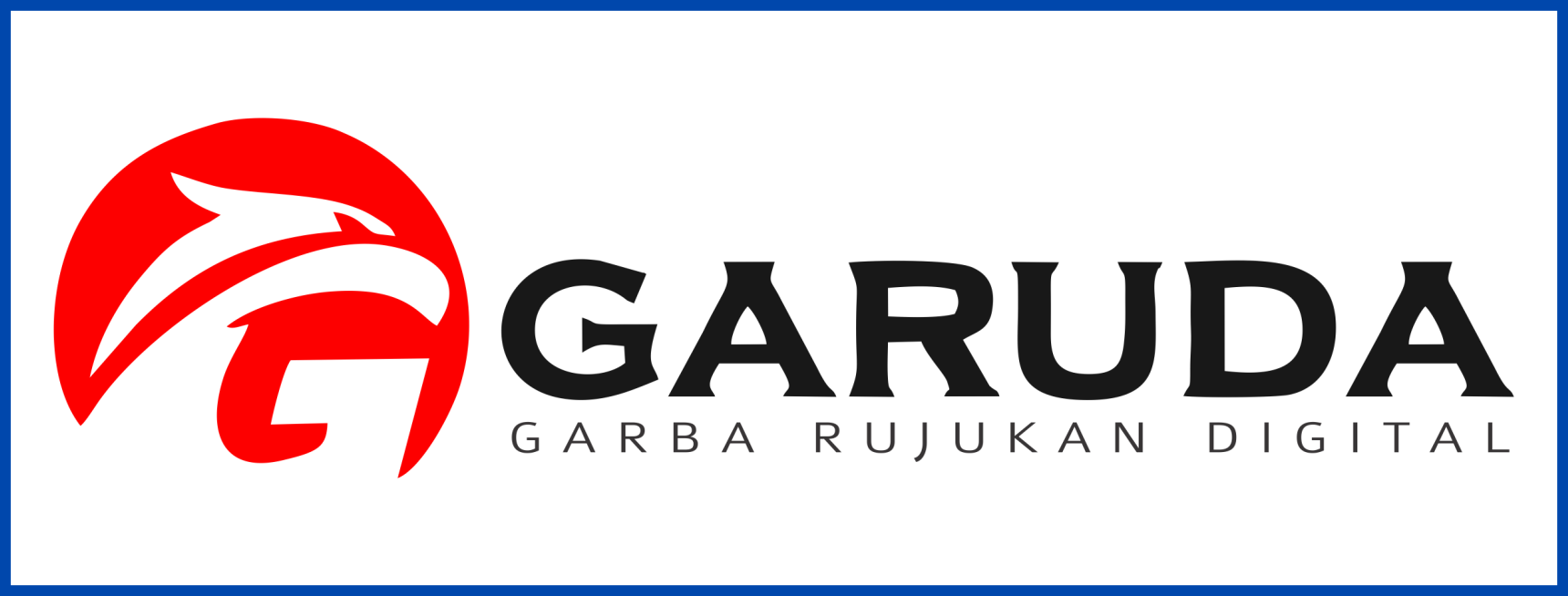Potensi Tanaman Lokal sebagai Tanaman Biofarmaka untuk Kesehatan di Desa Lemahbang dan Desa Pucung, Kecamatan Kismantoro, Kabupaten Wonogiri
Abstrak
Penggunaan obat tradisional menggunakan tanaman herbal telah menjadi bagian yang akrab dalam budaya masyarakat Indonesia. Tanaman herbal merupakan tanaman yang dapat berkhasiat dalam penyembuhan atau pencegahan segala macam penyakit. Tanaman herbal yang dikenal saat ini memiliki potensi untuk menjadi tanaman biofarmaka. Dari berbagai macam tanaman herbal, sebagian besar dapat ditemukan di Desa Lemahbang dan Desa Pucung, Kecamatan Kismantoro. Namun, untuk pemanfaatan tanaman herbal di Desa Lemahbang dan Desa Pucung masih sedikit dan hanya dimanfaatkan sebagai bumbu dapur atau jamu tradisional. Oleh karena itu untuk meningkatkan potensi tanaman herbal menjadi tanaman biofarmaka diperlukan adanya pengembangan lebih lanjut dalam hal pemanfaatannya. Pelaksanaan kegiatan Pengabdian kepada Masyarakat ini terbagi dalam tiga tahap, yaitu: 1) tahap persiapan; 2) tahap pelaksanaan; 3) tahap evaluasi. Ketiga tahapan tersebut dilakukan pada bulan Desember 2023 hingga Januari 2024. Dari kegiatan ini dikenalkan cara pembuatan jamu kunyit asem bubuk dan soothing gel lidah buaya. Hasil dari kegiatan ini adalah produk, data tanaman herbal di Desa Lemahbang, digitalisasi data, dan booklet mengenai daftar tanaman herbal yang ada di Desa Lemahbang. Dari kegiatan ini diperoleh kesimpulan bahwa kegiatan ini dapat meningkatan pengetahuan dan kesadaran masyarakat terhadap potensi tanaman herbal lokal dan akan dapat meningkatkan manfaat kesehatan dan ekonomi masyarakat. Proses digitalisasi melalui website desa memberikan akses yang lebih mudah bagi masyarakat untuk mengakses informasi seputar tanaman herbal. Pelatihan praktis juga memberikan manfaat langsung kepada para ibu PKK dalam pengolahan produk herbal sederhana.
Referensi
Aggarwal, B. B., Sundaram, C., Malani, N., & Ichikawa, H. (2007). "Curcumin: The Indian solid gold." Advances in Experimental Medicine and Biology, 595, 1—75.
Ahmad, R., Mazlan, M. K. N., Aziz, A. F. A., Gazzali, A. M., Rawa, M. S. A., & Wahab, H. A. (2023). Phaleria macrocarpa (Scheff.) Boerl.: An updated review of pharmacological effects, toxicity studies, and separation techniques. Saudi Pharmaceutical Journal, 31(6), 874—888.
Ahmadabadi, H. K., Vaez-Mahvadi, M. R., Kamalinejad, M., Shariatpanahi, S. S., Ghazanfari, T., & Jafari, F. (2019). Pharmacological and biochemical properties of Zingiber zerumbet (L.) Roscoe ex Sm. And its therapeutic efficacy on osteoarthritis of knee. J Family Med Prim Care, 8(12), 3798—3807. https://doi.org/10.4103/jfmpc.jfmpc_594_19
Ali, B. H., Blunden, G., Tanira, M. O., & Nemmar, A. (2008). Some phytochemical, pharmacological and toxicological properties of ginger (Zingiber officinale Roscoe): A review of recent research. Food and Chemical Toxicology, 46(2), 409—420.
Ali, M., Kenganora, M., & Manjula, S. N. (2016). Health benefits of Morinda citrifolia (Noni): A review. Pahramacognosy Journal, 8(4), 321—334.
Alqamari, M., Tarigan, D. M., & Alridiwirsah. (2017). Simplisia dan produk bahan alami nabati. Budidaya Tanaman Obat Dan Rempah, 48—55.
Altaf, R., Asmawi, M. Z. B., Dewa, A., Sadikun, A., & Umar, M. I. (2013). Phytochemistry and medicinal properties of Phaleria macrocarpa (Scheff.) Boerl. extracts. Pharmacogn Rev., 7(13), 73—80.
Assi, R. A., Darwis, Y., Abdulbaqi, I. M., Khan, A. A., Vuanghao, L., & Laghari, M. H. (2017). Morinda citrifolia (Noni): A comprehensive review on its industrial uses, pharmacological activities, and clinical trials. Arabian Journal of Chemistry, 10(5), 691—707.
Badan Pusat Statistik. (2014). Produksi tanaman holtikultura. Badan Pusat Statatistik.
Bilanovic, D., Starosvetsky, J., & Armon, R. H. (2015). Cross-linking xanthan and other compounds with glycerol. Food Hydrocolloids, 44, 129—135.
Chandrika, U. G., & Prasad Kumarab, P. A. (2015). Gotu kola (Centella asiatica): nutritional properties and plausible health benefits. Advances in food and nutrition research, 76, 125—157. https://doi.org/10.1016/bs.afnr.2015.08.001
Cosmetic Ingredient Review Expert Panel (2007). Final report on the safety assessment of aloe andongensis extract, aloe andongensis leaf juice,aloe arborescens leaf extract, aloe arborescens leaf juice, aloe arborescens leaf protoplasts, aloe barbadensis flower extract, aloe barbadensis leaf, aloe barbadensis leaf extract, aloe barbadensis leaf juice,aloe barbadensis leaf polysaccharides, aloe barbadensis leaf water, aloe ferox leaf extract, aloe ferox leaf juice, and aloe ferox leaf juice extract. International journal of toxicology, 26 Suppl 2, 1—50. https://doi.org/10.1080/10915810701351186
Ernst, E., & Pittler, M. H. (2000). Efficacy of ginger for nausea and vomiting: A systematic review of randomized clinical trials. British Journal of Anaesthesia, 84(3), 367—371.
Fareza, Z. A. N. A., Cholissodin, I. & Muflikhah, L. (2022). Prediksi hasil panen tanaman biofarmaka di Indonesia dengan menggunakan metode extreme learning machine. Jurnal Pengembangan Teknologi Informasi dan Ilmu Komputer, 6(11), 5331—5338.
Ghasemzadeh, A., Jaafar, H. Z. E., & Rahmat, A. (2010). Antioxidant activities, total phenolics and flavonoids content in two varieties of Malaysia young ginger (Zingiber officinale Roscoe). Molecules, 15(6), 4324—4333. https://doi.org/10.3390/molecules15064324
Ghasemzadeh, A., Jaafar, H. Z. E., & Rahmat, A. (2015). Phytochemical constituents and biological activities of different extracts of Strobilanthes crispus (L.) bremek leaves grown in different locations of Malaysia. BMC Complementary and Alternative Medicine, 15, 422.
Grzanna, R., Lindmark, L., & Frondoza, C. G. (2005). Ginger-an herbal medicinal product with broad anti-inflammatory actions. Journal of Medicinal Food, 8(2), 125—132.
Handajani, J., & Narissi, D. H. (2015). The effects of Curcuma zedoaria oil on high blood sugar level and gingivitis. Dental Journal, 48(2), 69—73. https://doi.org/10.20473/j.djmkg.v48.i2
Hartady, T., Balia, R. L., Syamsunarno, M. R. A. A., Jasni, S., & Priosoeryanto, B. P. (2020). Bioactivity of Amomum compactum Soland ex Maton (java cardamom) as a natural antibacterial. Sys Rev Pharm, 11(9), 384—387.
Hop, N. Q. & Son, N. T. (2023). Boesenbergia rotunda (L.) Mansf.: A review of phytochemistry, pharmacology, and pharmacokinetics. Current Organic Chemistry, 27, 1842—1856. https://doi.org/10.2174/0113852728278058231123094250
Kemenkes RI. (2011). Acorus calamus L – Dlingo. 100 Top Tanaman Obat Indonesia, 4—5. Kemenkes RI.
Kieliszek, M., Edris, A., Kot, A. M., & Piwowarek, K. (2020). Biological activity of some aromatic plants and their metabolites, with an emphasis on health-promoting properties. Molecules, 25(11), 2478. https://doi.org/10.3390/molecules25112478
Lavenia, C., Adam, A. R., Dyasti, J. A., & Febrianti, N. (2019). Tumbuhan herbal dan kandungan senyawa pada jamu sebagai obat tradisional di Desa Kayumas, Situbondo (studi etnobotani). Jurnal KSM Eka Prasetya UI, 1(5), 1—9.
Muderawan, I. W., Mudianta, I. W., & Martaningsih, N. W. (2022). Physicochemical properties, chemical compositions and antioxidant activities of rhizome oils from two varieties of kaempferia galangal. Indones. J. Chem., 22(1), 72–85.
Mulyani, H., Widyastuti, S. H., & Ekowati, V. I. (2016). Tumbuhan herbal sebagai jamu pengobatan tradisional terhadap penyakit dalam serat primbon jampi jawi jilid 1. Jurnal Penelitian Humaniora, 21(2), 73—91.
Ng, M. G., Ng, C. H., Ng, K. Y., Chye, S. M., Ling, A. P. K., & Koh, R. Y. (2021). Anticancer properties of Strobilanthes crispus: A review. Processes, 9(8), 1370. https://doi.org/10.3390/pr9081370
Okhuarobo, A., Falodun, J. E., Erharuyi, O., Imieje, V., Falodun, A., & Langer, P. (2014). Harnessing the medicinal properties of Andrographis paniculata for diseases and beyond: a review of its phytochemistry and pharmacology. Asian Pac J Trop Dis., 4(3): 213—222.
Pareek, A., Pant, M., Gupta, M. M., Kashania, P., Ratan, Y., Jain, V., Pareek, A., & Chuturgoon, A. A. (2023). Moringa oleifera: An updated comprehensive review of its pharmacological activities, ethnomedicinal, phytopharmaceutical formulation, clinical, phytochemical, and toxicological aspects. Int J Mol Sci., 24(3), 2098.
Preetha, T. S., Hemanthakumar, A. S., & Khrishnan, P. N. (2016). A comprehensive review of Kaempferia galangal L. (Zingiberaceae): A high sought medicinal plant in tropical asia. Journal of Medicinal Plants Studies, 4(3), 270—276.
Sanchez, M., Gonzalez-Burgos, E., Iglesias, I., & Gomez-Serranillos, M. P. (2020). Pharmacological update properties of Aloe vera and its major active constituents. Molecules, 25(6), 1324.
Sari, A. P. & Supratman, U. (2022). Phytochemistry and biological activities of Curcuma aeruginosa. Indonesian Journal of Chemistry, 22(2), 576—598. https://doi.org/10.22146/ijc.70101
Simamora, A., Timotius, K. H., Yerer, M. B., Setiawan, H., & Mun'im, A. (2022). Xanthorrhizol, a potential anticancer agent, from Curcuma xanthorrhiza Roxb. Phytomedicine, 105, Article 154359. https://doi.org/10.1016/j.phymed.2022.154359
Solikah, W. Y., Rachmawan, R. F., & Utami, D. (2023). Pengembangan biofarmaka menjadi produk olahan, pengemasan serta strategi pemasarannya. Jurnal ABDI, 8(2), 209—216. https://doi.org/10.26740/abdi.v8i2.20218
Syamsunarno, M. R. A., Safitri, R., & Kamisah, Y. (2021). Protective effects of Caesalpinia sappan Linn. And its bioactive compounds on cardiovascular organs. Front Pharmacol., 12, 725745.
Vij, T., Anil, P. P., Shams, R., Dash, K. K., Kalsi, R., Pandey, V. K., Harsanyi, E., Kovacs, B., & Shaikh, A. M. (2023). A comprehensive review on bioactive compounds found in Ccaesalpinia sappan. Molecules, 28(17), 6247.
Wang, S. Y., Zhao, H., Xu, H. T., Han, X. D., Wu, Y. S., Xu, F. F., Yang, X. B., Goransson, U., & Liu, B. (2021). Kaempferia galangal L.: Progresses in phytochemistry, pharmacology, toxicology and ethnomedicinal uses. Front Pharmacol., 12, 675350. https://doi.org/10.3389/fphar.2021.675350
Yulianto, S. (2017). Penggunaan tanaman herbal untuk kesehatan. Jurnal Kebidanan Dan Kesehatan Tradisional, 2(1), 1—59.
Copyright (c) 2024 Jurnal Pengabdian, Riset, Kreativitas, Inovasi, dan Teknologi Tepat Guna

This work is licensed under a Creative Commons Attribution-ShareAlike 4.0 International License.









